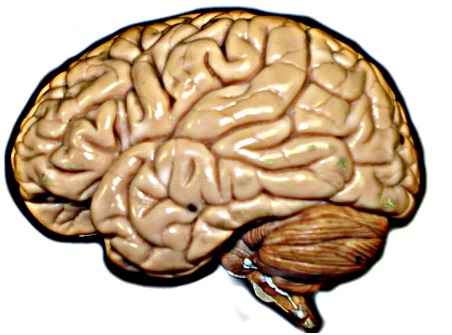May 11, 2017Showing Impact

Researchers at Imperial College London have created 3-D models to show what happens to football players’ brains when they suffer a forceful collision. Those involved with the models believe they will be key to analyzing the long-term effects of head impacts, which could lead to improvements in protective strategies and gear.
In order to construct the 3-D models, the researchers used data that was originally collected by Biokinetics and Associates, Ltd. (Canada). This data included a total of 182 collisions recorded in NFL games from 1996 to 2001. The team then chose a specific collision that they believed could be accurately reconstructed in the lab and inputted this data into their model.
The use of 3-D modeling gave the researchers a detailed and multi-layered picture of how traumatic brain injury (TBI) affects the brain and ultimately leads to chronic traumatic encephalopathy (CTE). In all of their 3-D models, the researchers found that the damage created from a TBI is greatest in the depths of the folds on the surface of the brain called sulci. This finding is consistent with previous studies on CTE. Further, the team discovered that the location and severity of the initial impact to the head significantly influences the magnitude and pattern of tau protein build-up later on when CTE develops.
“In TBI, the force of the blow shakes the brain, which is similar in texture to jelly,” Mazdak Ghajari, PhD, a member of the Faculty of Engineering at Imperial College London who led the study, told Medical Xpress. “This shaking process deforms the brain tissue and can cause ruptured blood vessels and damaged nerve cells and more severe complications later on. We’ve been able to replicate those initial moments when the ‘jelly’ brain is first deformed on impact by combining engineering principles and medical knowledge. This is providing us with new insights.”
The researchers also compared their 3-D high-fidelity models with MRI data of 97 patients with TBI and studies on post-mortem data of the brains of NFL players with CTE whose brains had been donated to science.
“We are very excited by the ability to link the early and late effects of head injuries,” said David Sharp, PhD, a Professor from the Department of Medicine at Imperial College London and co-author of the study. “A large challenge is identifying patients at risk of dementia after head injury, and our study provides a way to connect the critical events in this process. We will be working to understand how the way the brain deforms leads to brain degeneration, as this will be key to protecting against dementia.”
In the future, the researchers hope to use their models to further analyze the long-term impact of head injuries. Eventually, one goal could be improving football equipment to make it safer, including helmets.
“Current technologies for assessing helmet safety are pretty crude,” said Dr. Ghajari. “Our work is still in the early stages, but we believe that it shows promise for more accurately modeling how the brain deforms in different types of impacts. Using this knowledge, we could refine the design of particular areas of helmets so that they could withstand collisions associated with particular types of sports – Ultimately, we think better protective wear may prevent long-term diseases such as CTE.”



